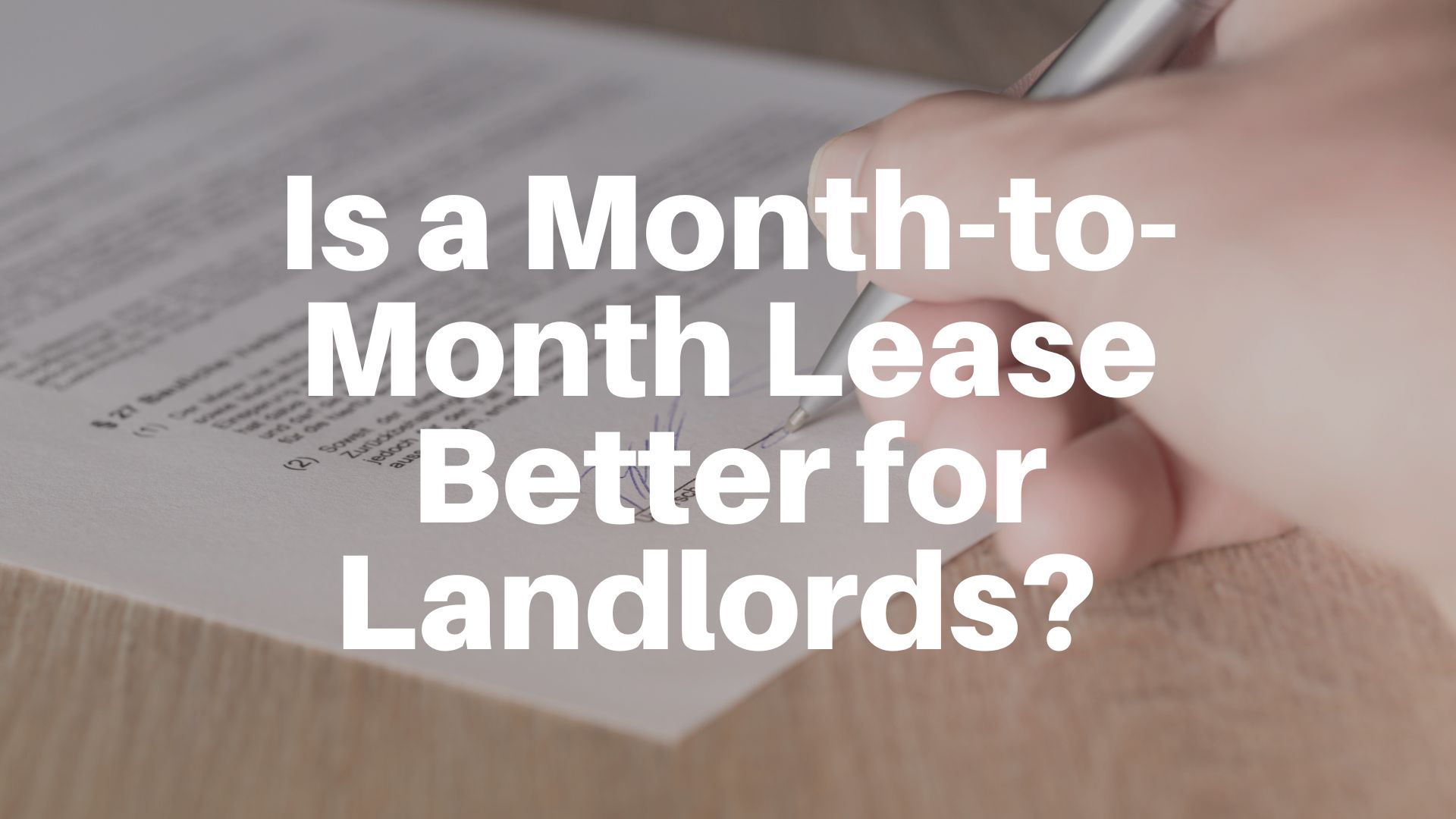Is a Month-to-Month Lease Better for Landlords?

If you’re struggling to decide whether to go with a month-to-month lease or a fixed yearly lease, we got you covered.
In this post, we at Evolve Denver are going over the benefits and drawbacks that come with a month-to-month lease to help you make the best decision for you and make sure your property stays rent ready .
Defining a Month-to-Month Lease
A month-to-month lease is a binding agreement between a landlord and tenant that automatically renews every month. If one party decides not to continue, the contract ends as long as a 30-day notice is served.
Month-to-month leases can be done in two ways: It can either be set as an extension of a previous lease, or both parties can settle with a month-to-month lease agreement from the onset.
Prior to making up your mind to rent out your unit on a month-to-month leasing arrangement, it’s best to read up on the pros and cons.
Below are the advantages and disadvantages that can result from a signed month-to-month lease.
Benefits of a Month-to-Month Lease
Flexible Arrangement
One of the huge draws coming from a month-to-month lease for the renters is the temporary nature of it. If they’re waiting indefinitely for a situation to be over or a project to be completed, then they can stay for as short or as long as needed. Landlords can also earn from this setup.
Short Notice to End the Tenancy
Whether you get along with your tenant or not, a long-term fixed lease can mean waiting for quite sometime before the renter moves out. But with a month-to-month lease, the 30-day notice is a great way to end a tenancy when you want to.
For example, your property is sold, or you want to make some changes to your policies. So, landlords retain more control if they want a new tenant to live in their rental space.
Easy Rent Price Adjustment
With a month-to-month lease setup, the rent can be set higher immediately. This is advantageous, especially in cases where your neighborhood location grows in popularity. You can easily adapt to the present market demand which can maximize your rental earnings. You’re not constrained to waiting for a long-term rental term to be over.
Fewer Penalties for Breaching the Lease
As long as the 30-day notice is sent to the renter, the chances of being sued are lower since month-to-month leases are short-term. Both parties already know that the lease ends at a particular period. For landlords, this can be a good thing since they can quickly adjust to the market demand.
When peak season starts, they can tweak the rent price and accept new tenants open to paying a higher rental fee.

Updating your Rental Policies is a Breeze
Since you can adjust rent prices quickly according to the demand, it also follows that you can do the same for removing or adding new rules on your rental unit when you practice a month-to-month lease.
With fixed-term leases, waiting for the term to end is required to make policy changes stated on the signed agreement.
Drawbacks of a Month-to-Month Lease
Unstable Nature
Given the temporary conditions of a month-to-month lease, vacancies are likely to happen. At times, demand may be high, but you can also run out of interested renters to serve.
Uncertainty
With a month-to-month lease, tenants have the choice to move out when they want. So, if you currently have great tenants, you’ll never be certain that they’ll stay long-term.
Short Notice
There’s a lot of pressure when seeking new tenants and having just a month's duration to find them. This can be stressful, especially if marketing is not your forte. You can also end up sacrificing quality for the sake of having a renter. You may not perform an extensive tenant screening. This can expose you to the risks of unpaid rent or property damage.
Unpredictable Income
When you have a month-to-month lease, tenant turnovers are more frequent, and this means that your income will be unpredictable.
Month-to-Month Lease Signing

Even if you have a month-to-month lease arrangement, it’s still advisable to have a signed written lease. This protects you from any legal disputes in the future. Although the agreement technically ends after each month, you can make it less strenuous by providing a Holding Over clause in your contract. This way, you don’t have to sign a new leasing agreement every month.
The holding over clause states that the agreement continues on a month-to-month term once the tenancy date ends. It protects the landlords in cases where a tenant refuses to leave when the rent period is over.
Defining the 30 Days’ Notice for a Month-to-Month Lease
Although 30 days is the set minimum requirement for landlords or renters to notify each other of the month-to-month lease expiry, they can still alert each other before the 30-day period. This period is also applicable to policy and rent price changes. The important thing is to give a clear notification to the renter within thirty days prior to the changes being made.
If you decide to increase the rent fee, then this should also be placed in writing. Other states may require landlords to send the notice through certified mail . As a landlord, you should know the proper process in your state to ensure that you remain compliant with the law.
Bottom Line
Now that you’re aware of the pros and cons of a month-to-month lease, you can make a more informed decision about what would work better for your rental home!
If you’re looking for more information, contact Evolve Real Estate and Property Management today.
